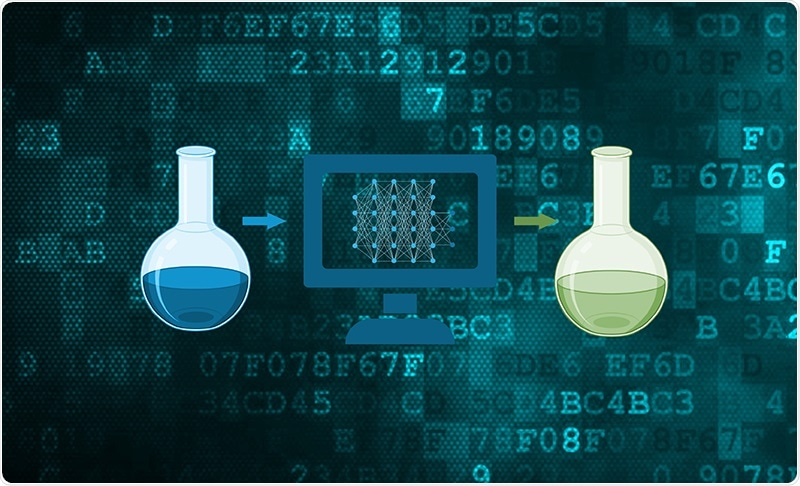Machine learning has been extensively utilized in the chemical sciences for a wide range of processes, including drug design.

Purdue University scientists are using machine learning models to create new options for drug discovery pipelines. Image Credit: Purdue University.
However, machine learning models that are potentially tested for new reaction results and applied to improve human interpretation to understand chemical reactivity decisions made by the same models are quite limited.
Now, researchers from Purdue University have introduced new chemical reactivity flowcharts that would allow chemists to understand the outcomes of reactions through statistically powerful machine learning models. These models are trained on only a minimal number of reactions. The study has been published in the Organic Letters journal.
Developing new and fast reactions is essential for chemical library design in drug discovery. We have developed a new, fast and one-pot multicomponent reaction (MCR) of N-sulfonylimines that was used as a representative case for generating training data for machine learning models, predicting reaction outcomes and testing new reactions in a blind prospective manner.”
Gaurav Chopra, Assistant Professor of Analytical and Physical Chemistry, College of Science, Purdue University
Chopra continued, “We expect this work to pave the way in changing the current paradigm by developing accurate, human-understandable machine learning models to interpret reaction outcomes that will augment the creativity and efficiency of human chemists to discover new chemical reactions and enhance organic and process chemistry pipelines.”
He added that the human-interpretable machine learning approach, developed by Purdue University researchers and introduced as a chemical reactivity flowchart, can also be used to study the reactivity of any chemical reaction or any MCR.
The new method does not require large-scale robotics because chemists can use these techniques while performing reaction screening in their own laboratories.
We provide the first report of a framework to combine fast synthetic chemistry experiments and quantum chemical calculations for understanding reaction mechanism and human-interpretable statistically robust machine learning models to identify chemical patterns for predicting and experimentally testing heterogeneous reactivity of N-sulfonylimines.”
Gaurav Chopra, Assistant Professor of Analytical and Physical Chemistry, College of Science, Purdue University
The new study complements other research and innovations made by Chopra’s laboratories, whose group members are currently working with the Purdue Research Foundation Office of Technology Commercialization to patent various technologies.
The unprecedented use of a machine learning model in generating chemical reactivity flowcharts helped us to understand the reactivity of traditionally used different N-sulfonylimines in MCRs. We believe that working hand-to-hand with organic and computational chemists will open up a new avenue for solving complex chemical reactivity problems for other reactions in the future.”
Krupal Jethava, Study Co-Author, College of Science, Purdue University
Jethava is a postdoctoral fellow in Chopra’s laboratory.
The team at Purdue University hopes that their study will pave the way to become one of several examples that will demonstrate the power of machine learning for novel synthetic methodology development for drug design and also beyond in the days to come, added Chopra.
“In this work, we strived to ensure that our machine learning model can be easily understood by chemists not well versed in this field,” stated Jonathan Fine, a former graduate student at Purdue University, who also co-authored the study.
“We believe that these models have the ability not only be used to predict reactions but also be used to better understand when a given reaction will occur. To demonstrate this, we used our model to guide additional substrates to test whether a reaction will occur,” Jonathan Fine concluded.
Source:
Journal reference:
Jethava, K. P., et al. (2020) Accelerated Reactivity Mechanism and Interpretable Machine Learning Model of N-Sulfonylimines toward Fast Multicomponent Reactions. Organic Letters. doi.org/10.1021/acs.orglett.0c03083.